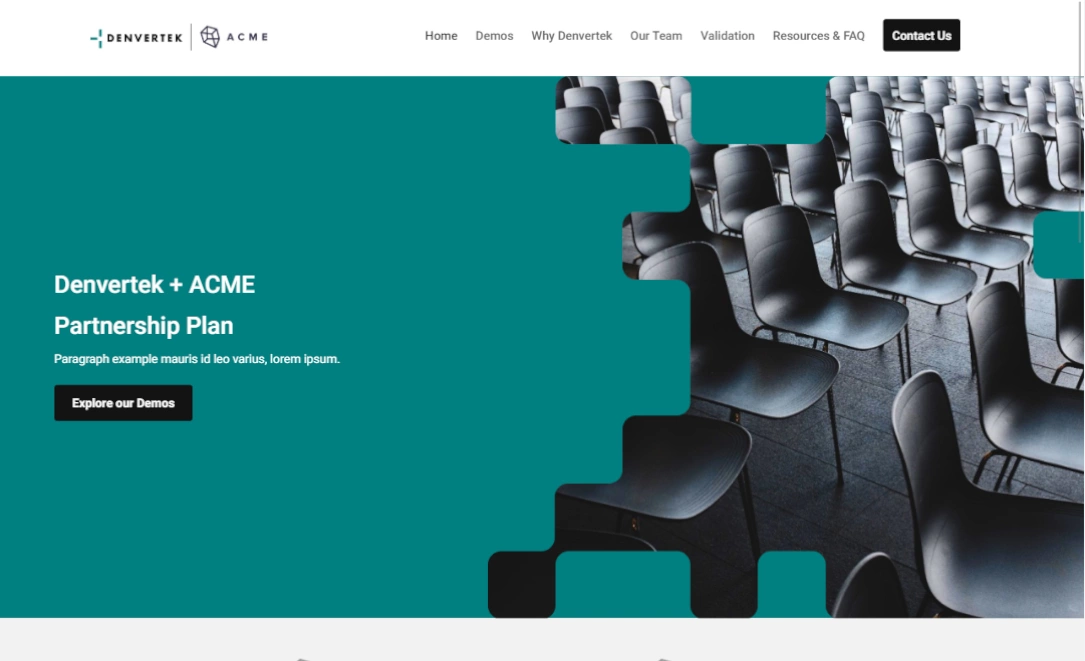In the world of sales enablement technology, creating the perfect tool stack for your team can be crucial to setting them up for success. But what is a sales enablement tech stack exactly? In general, it’s a way to equip your team with all the programs and products they need to not just get the job done, but to hit their markers for success. So let’s dive into it and break down not just what they are, but how to build one and why you should.
What is a sales enablement tech stack?
We’ve already mentioned that a sales enablement technology stack is a way to help your teams achieve success, but let’s get a little more granular. What do we mean by “stacking”? Essentially, stacking is a way to describe a layered collection of software that can help streamline essential processes. The stacking part refers to the way each tool works with different parts of a related system or infrastructure, such as a Salesforce-based tool stack or in our case, a sales enablement tool stack.
A sales enablement technology stack should specifically aim to optimize your sales team, making them more efficient and simplifying their essential tasks as much as possible. While sales enablement is all about training and coaching, ensuring they have access to the right sales stack will help set them up for success.
What are the different sales enablement technology stack layers?
There are many kinds of “technology stacks” when it comes to business and they all have various layers. But in general, the tech stack layers are organized from the back end (or server side) to the front end (or client side). That means you start building a stack with the programs that act most like a framework for your business and work toward the programs that the client might interact with.
A sales enablement technology stack’s layers will be a little more simplified because it’ll be focused on the applications and programs you need without expanding out into the actual framework of the company. That means you don’t need to dive into operating systems and programming languages (essential parts of a tech stack). Instead, layers can include sales enablement programs, performance tools, and even data storage.
Why should I build a sales enablement tech stack?
There’s a reason that according to the LinkedIn State of Sales 2021 report 54% of sellers say that sales tech helps them build trust and why 68% said they had plans to invest more in tech.
If you want to invest in better tools, you need a better strategy for doing so. It’s not as smart a move as you might think to merely run out and grab all the best tools you can for the cheapest price. Why? Because every company is different and there’s no one-size-fits-all solution!
By constructing a customized sales enablement technology stack, you can make much more thoughtful and considered decisions about what your business really needs and thus create something your team will actually use.
How to build a sales technology stack your team will actually use
Step 1: Outline your processes and define customer profiles
The first and most important step in setting up your sales enablement technology stack is having a thorough understanding of where your team is right now. If you’ve already started the sales enablement process then you should have some fairly detailed training resources on hand. Review exactly how your sales and marketing teams operate so you can make sure you understand what they need.
Next, you’ll want to look outward at your clients and potential customers. Have you developed an ideal customer profile? That’s a great place to start! If not, now might be the perfect time to create one. The point here is to carefully study what customers actually want, not just what you assume they want. Once you understand those wants, along with exactly who your customers are (age, industry, etc.) you can make more informed opinions about how your teams can meet their needs.
This step will help you to highlight the gaps, pain points, and potential solutions the right sales technology stack can offer you.
Step 2: Take a look at the tools you already have
Armed with a better understanding of what your teams need, you’re ready to look at the tools you already have. Make an inventory of all the programs, subscriptions, services, and software your team is using. With your list, see if there are ways to check usage on the backend and ask your team directly why or why not they’re using certain products. That will tell you far more than any educated guess ever could! After all, it’s your team that’s in the weeds with these things every day.
The information you gain here may help save you money in the long run. If it turns out you’re paying for programs your team isn’t using because they’re unhelpful or inefficient, that means there’s fat to trim and budget to reallocate! Alternately, if there are programs it turns out would be a big help but your team hasn’t been properly trained on how to use them, that’s a great opportunity for your sales enablement program.
Step 3: Define your needs in relation to your KPIs
At this point, you should be full of helpful information which means you’ll likely have a clearer understanding of your wants and needs. That means it’s time to start making and prioritizing your sales enablement and marketing tools wishlist. Some questions to ask yourself when thinking about your wishlist are:
- What gaps in your tool arsenal did you identify?
- What pieces of the puzzle are missing?
- What resources might be better used elsewhere?
- Where are your reps struggling?
As part of your sales enablement strategy, you should have clearly defined KPIs that you’re tracking and measuring. So once you answer those questions, you can think about ranking your needs in terms of how well they’ll help you achieve your goals. This can help prevent you from being distracted by wants and “nice-to-haves” that aren’t essential to achieving your quarterly or yearly benchmarks.
Step 4: Compare and contrast your options
Now it’s time to make your decisions! Look at the sales enablement tech that can best help you in the categories you’re focused on. This could be anything from sales automation tools to e-signature tools to project management programs. Once you’ve narrowed down your list to the most attractive options, it’s time for a little compare and contrast. Don’t be afraid to ask questions and seek out demos!
Now you’re ready to add to your sales tools stack and have a more robust overview of your entire sales enablement ecosystem.
Zoomforth: The missing piece in your sales enablement technology stack
Because Zoomforth is a leader in the world of microsite creation and hosting, it’s one of the best tools to add to your arsenal. Every Zoomforth site has real-time analytics, giving you a wealth of data to study, which is great because it means optimizing campaigns can happen in a snap.
Not only that, but Zoomforth makes it easy to keep all of your pages on brand and there’s no limit to how many pages you can create! So you’ll never have to worry about running out of space. Don’t wait — request a demo today.



